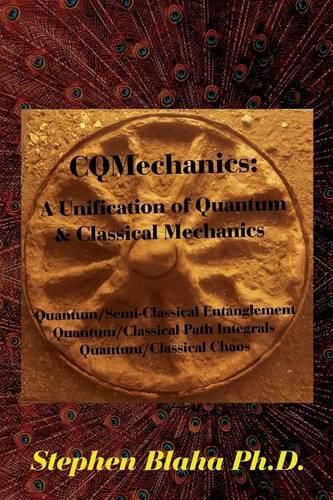Readings Newsletter
Become a Readings Member to make your shopping experience even easier.
Sign in or sign up for free!
You’re not far away from qualifying for FREE standard shipping within Australia
You’ve qualified for FREE standard shipping within Australia
The cart is loading…






The relation of quantum and classical phenomena has been a subject of continuing interest. Most studies approximate the quantum description of a phenomenon to obtain a classical or semi-classical approximation. This book develops a new formalism that contains both fully quantum and classical sectors, and a continuous transformation between them that provides an intermediate partly quantum - partly classical sector. This intermediate sector can play the role of a bridge between the quantum and classical descriptions of a process. Using this new formalism we consider the case of the harmonic oscillator in detail relating the quantum oscillator through the bridge to the classical oscillator. We then develop a generalization of the Feynman path integral formalism that has both a normal quantum sector and also a ‘new’ classical path integral sector - again with a partly quantum-partly classical intermediate sector. Our path integral generalization yields a generalization of the Schroedinger equation with both quantum and classical ‘wave function’ solutions. We also apply this formalism to the Fokker-Planck equation, for which it is naturally adapted. Next we apply the new formalism to quantum field theories that are known to be chaotic, and then generate a classical sector - also with chaotic behavior. We also take the standard approach to quantum entanglement and show how to extract a semi-classical entanglement as well as a classical limit without entanglement. The Boltzmann equation is easily placed within the framework of our new formalism. We solve a special case of the Vlasov equation as an example. A special relativistic Boltzmann equation is also developed within the framework of our formalism. Lastly, we develop our formalism for boson and fermion quantum field theory. We give a sensible reason why Nature must be quantum.
$9.00 standard shipping within Australia
FREE standard shipping within Australia for orders over $100.00
Express & International shipping calculated at checkout
Stock availability can be subject to change without notice. We recommend calling the shop or contacting our online team to check availability of low stock items. Please see our Shopping Online page for more details.
The relation of quantum and classical phenomena has been a subject of continuing interest. Most studies approximate the quantum description of a phenomenon to obtain a classical or semi-classical approximation. This book develops a new formalism that contains both fully quantum and classical sectors, and a continuous transformation between them that provides an intermediate partly quantum - partly classical sector. This intermediate sector can play the role of a bridge between the quantum and classical descriptions of a process. Using this new formalism we consider the case of the harmonic oscillator in detail relating the quantum oscillator through the bridge to the classical oscillator. We then develop a generalization of the Feynman path integral formalism that has both a normal quantum sector and also a ‘new’ classical path integral sector - again with a partly quantum-partly classical intermediate sector. Our path integral generalization yields a generalization of the Schroedinger equation with both quantum and classical ‘wave function’ solutions. We also apply this formalism to the Fokker-Planck equation, for which it is naturally adapted. Next we apply the new formalism to quantum field theories that are known to be chaotic, and then generate a classical sector - also with chaotic behavior. We also take the standard approach to quantum entanglement and show how to extract a semi-classical entanglement as well as a classical limit without entanglement. The Boltzmann equation is easily placed within the framework of our new formalism. We solve a special case of the Vlasov equation as an example. A special relativistic Boltzmann equation is also developed within the framework of our formalism. Lastly, we develop our formalism for boson and fermion quantum field theory. We give a sensible reason why Nature must be quantum.